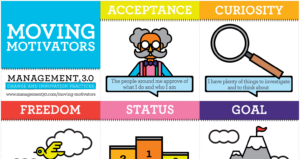You have a team member who has a pressing issue. It’s the single most important thing that they need to resolve. They explain the problem to a coworker, suggest a solution and ask for support… and all they get is a tepid response. This is a situation that repeats itself across workplaces every day. There are many reasons why people refrain from helping. They might not have the competence, they might disagree with the solution/problem or maybe they just don’t have the time. But what happens when they have the competence, agree with the assessment and could easily make time, but choose not to? Why don’t they? How do you help your team navigate these situations?
How to set role expectations and working agreements
 Conflicts in teams about how to work are common. There are expectations from team members on each other that aren’t being met. In a given team, members might be implicitly expected to perform a certain task. The team might have unspoken policies that seem to be common sense. Sometimes people pick up on these unspoken rules and implicit expectations, but when they don’t, you have a team in conflict. You can’t avoid all conflict (and a dose of healthy debate and discussion is good for teams), but you can help teams by explicitly defining the roles and working agreements. Instead of dealing with conflict after the fact, you start with discussion and agreement. The following workshop is the one I use with my teams and organizations.
Conflicts in teams about how to work are common. There are expectations from team members on each other that aren’t being met. In a given team, members might be implicitly expected to perform a certain task. The team might have unspoken policies that seem to be common sense. Sometimes people pick up on these unspoken rules and implicit expectations, but when they don’t, you have a team in conflict. You can’t avoid all conflict (and a dose of healthy debate and discussion is good for teams), but you can help teams by explicitly defining the roles and working agreements. Instead of dealing with conflict after the fact, you start with discussion and agreement. The following workshop is the one I use with my teams and organizations.
X-team Silos Game – getting in T-shape
Cross functional teams are complete in expertise but not necessarily collaborative. Sometimes team members hold on to their expertise too much and the team does not perform to its potential. This Lego game illuminates the difference when members allow themselves to take on tasks outside their expertise, being so called T-shaped. Play the game to kick-start your change and create collaboration.
Emo-lines
If you coach a scrum team but you’re not around to observe them during the sprint, how do you know how they felt about it?
Use Emo-lines

